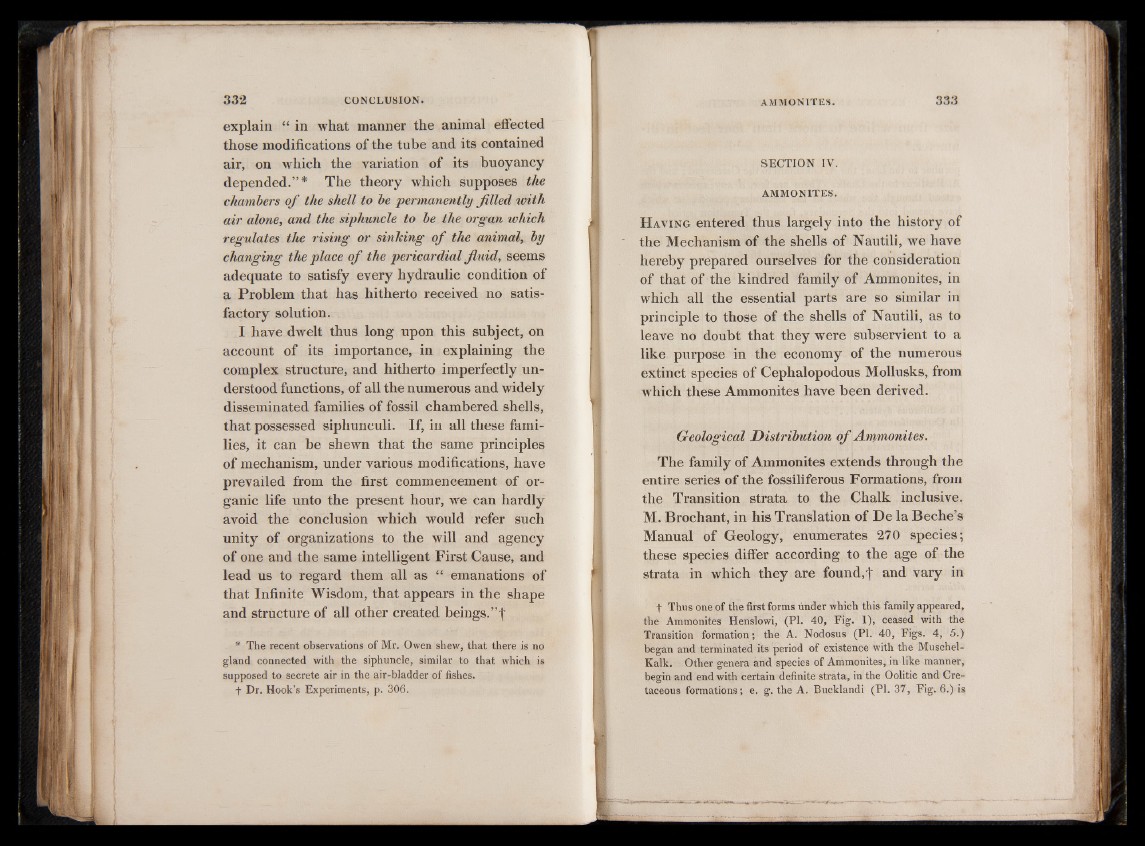
explain “ in what manner the animal effected
those modifications of the tube and its contained
air, on which the variation of its buoyancy
depended.” * The theory which supposes the
chambers o f the shell to be permanently filled with
air alone, and the sipkuncle to be the organ which
regulates the rising or sinking o f the animal, by
changing the place o f the pericardial fluid, seems
adequate to satisfy every hydraulic condition of
a Problem that has hitherto received no satisfactory
solution.
I have dwelt thus long upon this subject, on
account of its importance, in explaining the
complex structure, and hitherto imperfectly understood
functions, of all the numerous and widely
disseminated families of fossil chambered shells,
that possessed siphunculi. If, in all these families,
it can be shewn that the same principles
of mechanism, under various modifications, have
prevailed from the first commencement of or*
ganic life unto the present hour, we can hardly
avoid the conclusion which would refer such
unity of organizations to the will and agency
of one and the same intelligent First Cause, and
lead us to regard them all as “ emanations of
that Infinite Wisdom, that appears in the shape
and structure of all other created beings.” f
* The recent observations of Mr. Owen shew, that there is no
gland connected with the siphuncle, similar to that which is
supposed to secrete air in the air-bladder of fishes,
f Dr. Hook’s Experiments, p. 306.
SECTION IV.
AMMONITES.
H a v i n g entered thus largely into the history of
the Mechanism of the shells of Nautili, we have
hereby prepared ourselves for the consideration
of that of the kindred family of Ammonites, in
which all the essential parts are so similar in
principle to those of the shells of Nautili, as to
leave no doubt that they were subservient to a
like purpose in the economy of the numerous
extinct species of Cephalopodous Mollusks, from
which these Ammonites have been derived.
Geological Distribution o f Ammonites.
The family of Ammonites extends through the
entire series of the fossiliferous Formations, from
the Transition strata to the Chalk inclusive.
M. Brochant, in his Translation of He la Beche’s
Manual of Geology, enumerates 270 species;
these species differ according to the age of the
strata in which they are found,! and vary in
'f Thus one of the first forms under which this family appeared,
the Ammonites Henslowi, (PI. 40, Fig. 1), ceased with the
Transition formation; the A. Nodosus (PI. 40, Figs. 4, 5.)
began and terminated its period of existence with the Muschel-
Kalk. Other genera and species of Ammonites, in like manner,
begin and end with certain definite strata, in the Oolitic and Cretaceous
formations; e. g. the A. Bucklandi (PI. 37, Fig. 6.) is